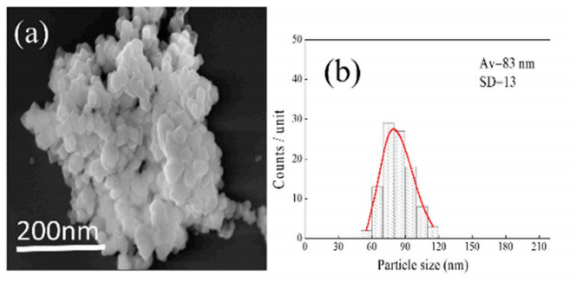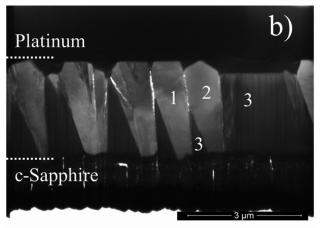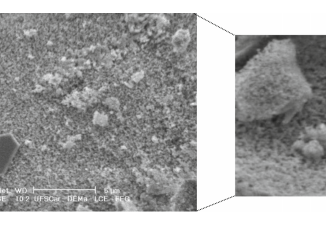
SPEEK-based proton exchange membranes modified with MOF-encapsulated ionic liquid
Abstract: Ionic liquids (ILs) 1-butyl-3-methylimidazolium hydrogensulfate (BMI center dot HSO4), 1-butylimidazole hydrogensulfate (BImH center dot HSO4) and 3-triethylammonium propane sulfonic hydrogensulfate (TEA-PS center dot HSO4) were encapsulated in UiO-66 (Zr-MOF) framework. These samples were incorporated into sulfonated poly (ether ether ketone) (SPEEK) polymer in different concentrations of IL. The influence of ionic liquid concentration encapsulated in Zr-MOF was evaluated through the morphology and thermal and chemical stability of the modified membranes. The incorporation of 7.5 wt% Zr-MOF in SPEEK produced membranes with high proton conductivity, making this the best mass ratio for the incorporation of the ionic liquids. Contact angle and swelling analysis indicate that the presence of these ionic liquids provides stability to the membrane, preventing it from absorbing high amounts of water. Mass ratios of 2.5 and 5.0 wt% of encapsulated ILs in Zr-MOF were also used. Proton conductivity results show that a higher concentration of ionic liquid generates agglomerates, limiting proton mobility in the membranes. Among the three ionic liquids tested, TEA-PS center dot HSO4 presents the best proton conductivity values, between 92 and 140 mS cm(-1). These results indicate that the Zr-MOF/TEA-PS center dot HSO4 sample is a good candidate for use in proton exchange membrane for fuel cells.
Author(s): da Trindade, LG; Borba, KMN; Zanchet, L; Lima, DW; Trench, AB; Rey, F; Diaz, U; Longo, E; Bernardo-Gusmao, K; Martini, EMA
MATERIALS CHEMISTRY AND PHYSICS
Volume: 236 Published: OCT 1 2019
DOI: 10.1016/j.matchemphys.2019.121792




